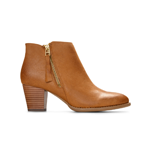
Soul To Sole: A Beginner’s Guide To An Anti-Inflammatory Diet & Lifestyle

Written by Juliet Kaska, celebrity trainer, health and wellness expert and Vionic Innovation Lab member
It’s nearly the end of 2020. A year that will go down in the history books, and one that has had us collectively more aware of health than perhaps ever before. And hopefully, has encouraged us to take as best care of ourselves as is possible.
One of the ways in which we might do just that is to consider the Anti-Inflammatory Diet (AID). Why? According to the Harvard Women’s Health Watch, “many major diseases that plague us—including cancer, heart disease, diabetes, arthritis, depression, and Alzheimer’s—have been linked to chronic inflammation.” That’s quite a list to keep track of. Happily, and as you might guess, AID can address all the symptoms of inflammatory diseases. That includes all forms of arthritis. And for the cherry on top? It can also slow down the aging process, both inside and out.
What Is Inflammation?
We hear the word a lot. “Inflammation.” It sounds like a wildfire in our veins. But what is it really, and is it ever a good thing?
Absolutely! Inflammation is one of the healing wonders of our body. It is the body’s process of defending itself against infections, injuries and foreign matter- such as toxins & poisons, by triggering your immune system to release proteins and antibodies to fight infection. For instance, when you have a small cut on your hand, the area surrounding the cut becomes redder in color and there is slight swelling around the wound. This is a strong and healthy inflammation immune response. This should subside within a few hours, or days if it is a significant wound. This is called acute inflammation.
Why Is Inflammation Bad For Me?
So, yes, acute inflammation is good for you, but when inflammation becomes chronic or long-term, it’s another story entirely. Chronic inflammation is not a healthy and helpful response to toxins but can create a path towards disease, or worsen the symptoms and effects of an existing disease. Chronic inflammation can damage healthy tissue, cells and organs, even leading to tissue death. Eventually all this can even lead to DNA damage and tissue decay which is linked to the development of these diseases: Depression, type 2 diabetes, heart disease, cancer, rheumatoid arthritis, and Alzheimer’s disease.
Now that I’ve got your attention, let’s talk about how and why inflammation shows up.
What Causes Inflammation?
Inflammation happens when a physical factor triggers an immune reaction. Inflammation does not necessarily mean that there is an infection, but an infection can cause inflammation.
What does that mean? Well, it means that inflammation can be caused by a number of factors such as:
- Healing immune response
- Chronic disease
- Diet
- Stress, including poor sleep patterns
- Long-term exposure to chemicals
- Overweight/Obesity
- Smoking
- Alcohol/Drugs
How Do I Know If I Have Inflammation?
Considering today’s world, it would be difficult to move throughout your day without exposure to at least some of these triggers. So how do you know what toll it’s taking on your body? Unfortunately, the signs of having chronic inflammation are sometimes “silent,” without specific symptoms. A person just may not feel well or have the sense they’re “rundown” or “coming down with something.” It could be a common cold, or the sign of something longer lasting and more serious.
If you suspect you may be experiencing inflammation, ask your doctor to test your biomarkers for inflammation. As well, adopt the Anti-Inflammatory diet and lifestyle immediately. You may be pleasantly surprised that you feel better within a few days to a couple of weeks. It’s worth it to make small, swift changes to avoid significant consequences down the road.
A Guide To Anti-Inflammatory Foods
So, uh, just what’s in the AID? Don’t worry, this isn’t a fad painful cabbage soup situation.
Fruits, especially cherries, blueberries, and oranges, are a staple of the AID. So are leafy, green vegetables like kale and spinach, tomatoes, sweet potatoes, squash, bell peppers and plant-based proteins. As a general rule, the brighter the color of the vegetable or fruit, the more likely it is to lower inflammation. (Check out one of my favorite recipes for Tuscan Kale Salad from Dr. Andrew Weil’s True Food Kitchen at the end of this post!)
Next, add fresh herbs and spices like garlic, turmeric, rosemary, cinnamon, cumin, ginger, and fenugreek. They all decrease inflammation. As do the fatty fish like salmon, tuna, black cod and sardines and mackerel that you might season with the above herbs. They’re full of the omega-3 fatty acids EPA and DHA, both of which have anti-inflammatory effects.
Happily, nuts, olive oil and avocado all have monounsaturated fats, which helps to STOP inflammation in its tracks. Hooray! Just be aware that they’re also high in calories, so keep your consumption reasonable for your body.
Adding in probiotic foods daily can also yield huge benefits. Things like sauerkraut, kombucha, miso, kimchi, and even apple cider vinegar are great options not only for your inflammation, but for your gut health, too.
Speaking of your gut, add a half to full cup of beans or legumes into your daily routine, as well as whole grains like brown rice, basmati rice, wild rice, barley, quinoa, steel-cut oats.
To drink, consider green tea. It’s list of health benefits is long, and anti-inflammation tops the list. Sweeten it with a little honey to pack even more of a punch both in taste and honey is on the anti-inflammation too!
Will I “Inflame” If I Break From The Diet Plan?
Nope. All the above foods are simply aiding and supporting your health. The absence of them won’t cause a sudden deterioration. You may find a short break from the plan gives you acute symptoms, something along the lines of feeling bloated or hungover. But that will not have lasting long-term effects. The important thing is making the lifestyle changes long-term. When that’s the case, the moments you deviate will be inconsequential to your overall health.
Now that we’ve covered what helps inflammation, what foods can cause it?
Foods That Cause Inflammation
Many of the foods on this list will be common sense, but there’s a few cases that are a bit more complicated. Another general rule: Try to consume mindfully, and pay attention to how your body feels before, during and after. Your body is a good communicator we just forget to listen.
- Refined Carbohydrates: sugar, white flour products, white rice, white pastas, breakfast cereals, sugar sweetened sodas, fruit juices, pastries.
- MSG
- Omega-6 Fatty acids: found in corn, safflower, sunflower, grapeseed, soy, vegetable, and peanut oil
- Saturated fats: cheese, pizza, red meat, full fat milk/cream, butter
- Trans fats trigger systemic inflammation: fried food, cookies donuts. All foods w/ partially hydrogenated oils
- Dairy and Gluten, which may irritate the body even further if it is already inflamed.
- Food additives/ preservatives
Coffee and Alcohol. Sure, an occasional glass of red wine is said to have health benefits, but sugary cocktails? Far less so.
And as far as coffee goes, the jury is still out. In studies coffee has been shown to both increase and decrease inflammatory markers. Try and limit your coffee to once a week, and make sure your coffee is made from organic beans, as pesticides increase inflammation. Even more reason to make the switch to organic green or black teas. If you feel the need for more caffeine than a single cup of tea can offer, try using 2 tea bags and let them steep for 5 full minutes in very hot water.
And if you are going to drink coffee, consider how much cream and sugar you’re adding, and refer to the list above.
Finally, it’ll come as no surprise that STRESS is one of the biggest causes of inflammation in the body. In the same way that acute inflammation can be healthy for us, small amounts of stress can help strengthen our bodies and brains in the forms of workouts or studying for a test. However, being chronically stressed is linked to a whole host of issues, and can exacerbate or trigger episodes of existing diseases. According to Sheldon Cohen, Ph.D, a professor of psychology at Carnegie Mellon University, “Stressed people’s immune cells become less sensitive to cortisol. They’re unable to regulate the inflammatory response, and therefore, when they’re exposed to a virus, they’re more likely to develop a cold.”
It’s not realistic to try and avoid all sources of inflammation, but by paying attention to and finding more balance in our diet and lifestyle, we can do a lot to prevent chronic, serious complications. Luckily, following this plan will only lead to better moods, higher energy, higher life-expectancy, and a stronger immune system. Life is a dish best enjoyed alongside a tall glass of health, don’t you think?
Dr. Andrew Weil’s Tuscan Kale Salad Recipe

One of my favorite and simple salads is a Tuscan Kale, specifically the one at Dr. Andrew Weil’s restaurant True Food Kitchen – a restaurant that specializes in an anti-inflammatory menu. After making the recipe from the True Foods cookbook a half dozen times, I began to doctor it and make it my own. At our home it is on our weekly menu, sometimes twice and my husband says it is better then the good Dr’s recipe. Take that with a grain of salt, he has to say that, so I keep feeding him. I have named my version Mediterranean Kale Salad.

Ingredients – all should be organic when possible
- 2 bunches of Lacinato/Black Kale. Stems and midribs removed, then finely chopped
- ¼ cup freshly squeezed lemon juice
- ¼ cup extra-virgin olive oil
- 3 cloves garlic, mashed
- 2 cups of red grapes, sliced in half
- 1 teaspoon hot red pepper flakes (less or more to taste)
- 1/3 cup grated parmesan, pecorino, or Romano- (or a combination)
- 1/3 cup breadcrumbs* (ideally made from organic non-enriched wheat bread)
- 1/3 cup raw pumpkin seeds
- ½ teaspoon coconut oil
- ¼ teaspoon salt
- Black pepper, to taste
Instructions
- In a small sauté pan heat coconut oil over a low heat. When oil has melted, add pumpkin seeds and gentle toss seeds till they are coated with the oil. Heat until they begin to brown on both sides. Turn the heat off. Toss with pinch of salt. Let sit to cool. (In the summer months I don’t enjoy eating salads with warm ingredients, so I will cool in refrigerator while I prepare the rest of the salad).
- Cut and de-stem kale leaves. Rinse with room temperature water and massage the kale.

- Whisk together lemon juice, olive oil, garlic, salt, pepper, and red pepper flakes.
- Place kale in a serving bowl. Pour lemon & olive oil mixture over kale and toss well.

- Add most of the cheese and toss again.
- Let kale sit for at least 5-10 minutes.
- Add breadcrumbs, toss again.
- Add grapes, toss again.
- Sprinkle the remaining cheese on top
This recipe makes up to 8 servings. I keep our leftovers and repurpose them the next day. It is the only salad I will keep for leftovers; in fact, it often tastes even better on day 2!
This salad is perfect to repurpose for breakfast too! Yes, you read that correctly, kale salad for breakfast, with 1-2 poached eggs on top. This is a great meal to start your day off right. It is packed with tons of protein, healthy mono-saturated fats, it is filling and satiating. And well how do I say this…It gets the trains moving.

Enjoy!
To try the original recipe by Dr. Andrew Weil, click here.
SHOP ACTIVE SNEAKERS
LEARN MORE ABOUT THE VIONIC INNOVATION LAB









